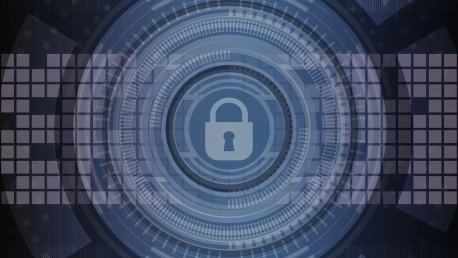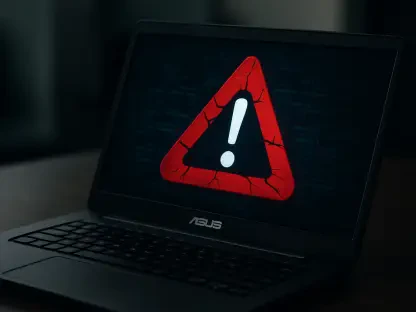The next year is not so far now. Cyber Defence 2017 is shaping up. By this we mean all cyber-security lines of defence, research-level and company-level.
What will the trends be and how will they unfold? Although surprises are not excluded (see the recent Dyn attack), some have started to release predictions.
Macro trends in Cyber Defence 2017, as Gartner predicts them
Gartner leads the way with the cyber-security trends to look out to. In October 2016, at the company’s symposium, those interested found out a bit more on Cyber Defence 2017.
ITWorld synthetised 7 macro trends for security chiefs. A modern model of digital security is shaping up:
- Risk management should balance the business needs inside each organization;
- It’s high time for a serious assessment; determining exactly what skills lack in the cyber-security departments is mandatory;
- CSOs need to reconquer the lost territories, by striving to master cloud security and coming up with efficient solutions. So far with SaaS, the services externalization created the false impression that some external factors are in care of data protection. This proved to be wrong. A different approach is on the line, where companies deploy new strategies to reclaim data ownership;
- Adaptive cyber security fits best modern security teams. A continuous response mode will drive a set of changes in the security work environment;
- 2016 taught specialists that Wi-Fi is not reliable enough for IoT operations. A different network security management emerges. Network segmentation should ensure incidents are restraint, and the malicious agents’ spread process contained;
- Similarly, data segmentation presumes different regimens for different types of information. Establishing need-to-know policies should fight data leaks;
- Digital Security is seemingly “the next wave” in cyber-security. What does it mean? Being in control of the fact that once companies have a digital presence, they have to face an upgraded level of threats.
Comparing Cyber Defence 2017 with previous Gartner predictions
We found the previous 6 predictions on cyber-security, according to the same research company. Their take, back in the spring on 2016, was to estimate the tendencies for both the current and the next year.
What did they made of the foreseeable changes back then?
- A massive disruption due to digital-physical boundaries converging; the traditional cyber-security model would not be able to keep up with the new requirements. This most likely happened, even if some are still in denial.
- The software-defined movement would trigger management flexibility needs, as well as the necessity of new capabilities. This also happened – see the ongoing cyber-security skills shortage.
- A shift towards more adaptive cyber-security architectures. Looking at the Cyber-security 2017 predictions, the phenomenon is ongoing.
- Redefining data identity, especially when found on devices and applications.
- The specialists will have to reconsider critical data access and reshape access control management. Definitely happening, due to the fact that various incidents have pointed out how there are unexpected chains of causality that lead to data breaches and malicious infestations.
Comparing these to the most recent Gartner predictions, the resulting image is one of validation. If there was need for certitudes, the 2016 incidents have provided it. Organizations know to learn from the mistakes of others. It is far too expensive to ignore such important lessons.
All warnings seem to deliver in 2016. Out of them, the ones related to IoT vulnerabilities is the most powerful. Due to its amplitude and connections multiplicity, this digital environment simply requires a different level of cyber-security.
Cyber-Security 2017 (and 2016) from a slightly different angle
Due to having read and researched all the major cyber-security events that hit the online media this year, all of the above make perfect sense. However, there are many other tendencies crystallized or soon to reveal themselves in this extremely critical field.
POWERNET America also had a go at predicting the tendencies for the next two years. We assume this happened somewhere in early 2016. Let’s see where would the focus reside, in their opinion:
- Epayments and mobile payments would become huge, thus attracting cyber-criminals. Any flaw can become the starting point of a cyber-attack, generating immense losses.
- Wearables, due to the fact that they provide entrance points into bigger systems, will also be hot targets.
- Companies are likely to keep a slow rithm in adapting to the new requirements and threats, due to downplaying the gravity of the risks.
- Employees continue to be vulnerable and cyber-attackers will social engineer their way towards the most important human weak entry points.
- Healthcare organisms and SMBs see more attacks coming their way than before.
- Smart technology, including automobile-embedded systems, are on the list of targets even if so far car cyber-attacks are more scenarios than realities.
Cyber Defence 2017, what are we looking at?
To sum it up, due to the nature of threats to come, cyber-security needs to become digital security.
Cyber-attackers sophistication would probably be me by an increasing wave of cybersec automation.
The cyber-security providers will compete in adaptive, flexible products that strive to cover all possible risks.
The smart technology producers will perhaps change places in popularity due to their cyber-security awareness policies. Offering the most cost accessible products simply isn’t enough anymore. Instead, taking care to embed only certified, secure hardware and software elements will count more and more.
Organizations, once convinced they actually need better strategies, will change their internal resources to better stand up to any possible cyber-attacks. Outsider consultants would meet inside forces in the attempt to defend the entire battle line.
Although these are more necessities than trends, it is no less true that indeed cyber-security needs to implement the right changes. Otherwise, we’ll be seeing the same predictions one year later, on top of new incidents.









